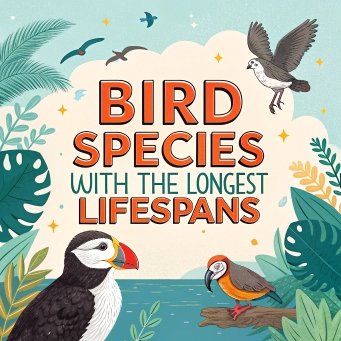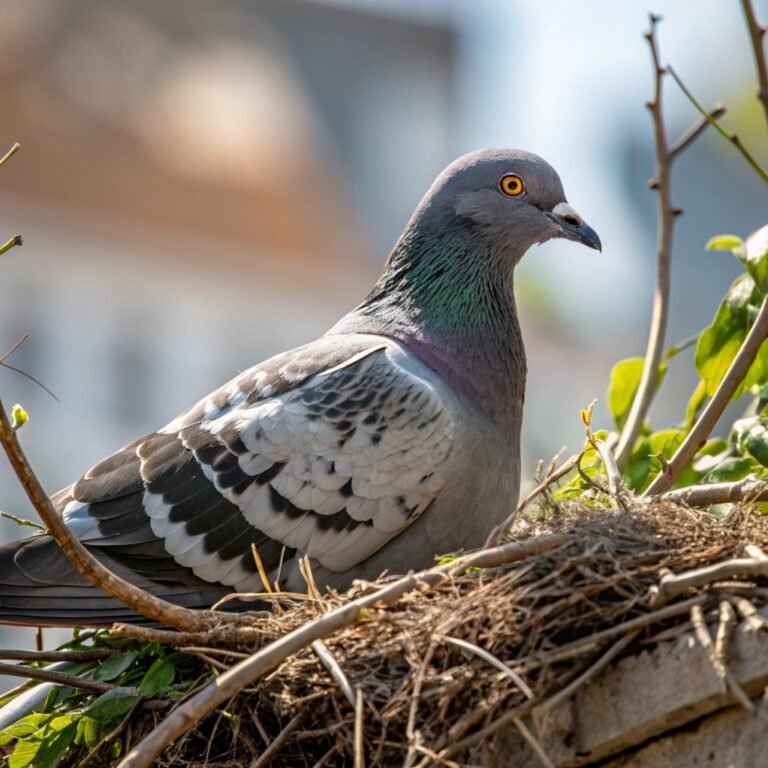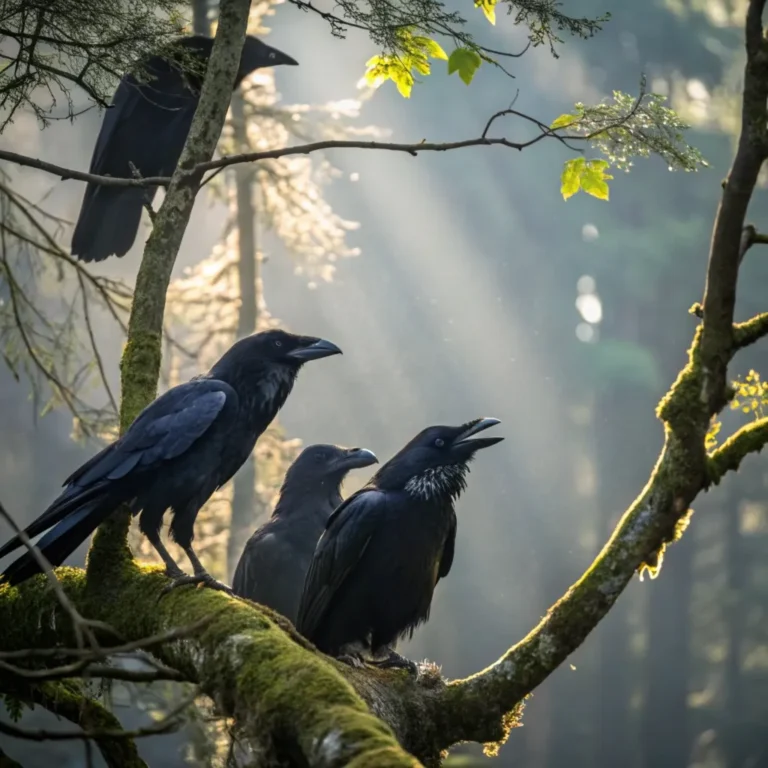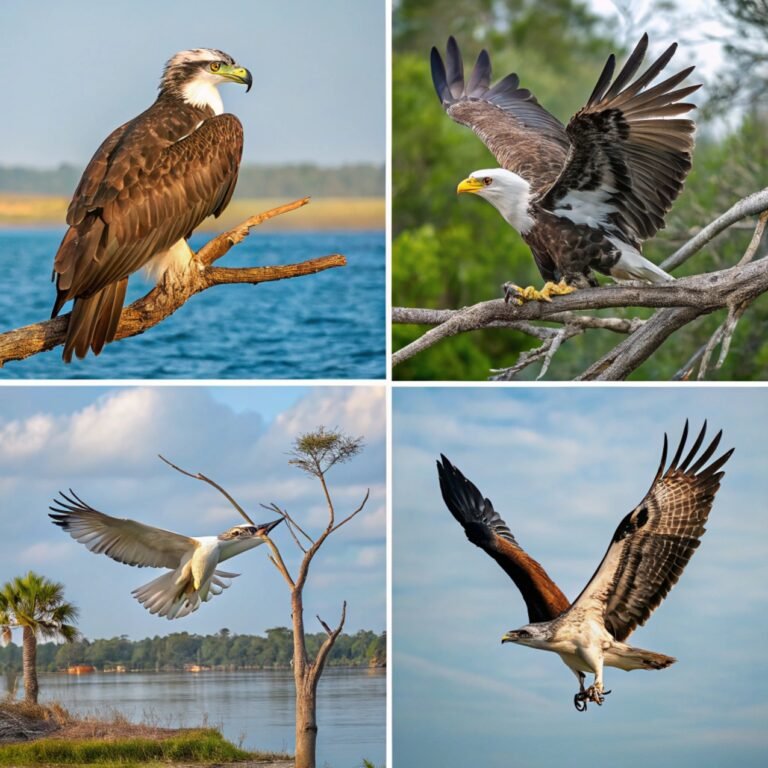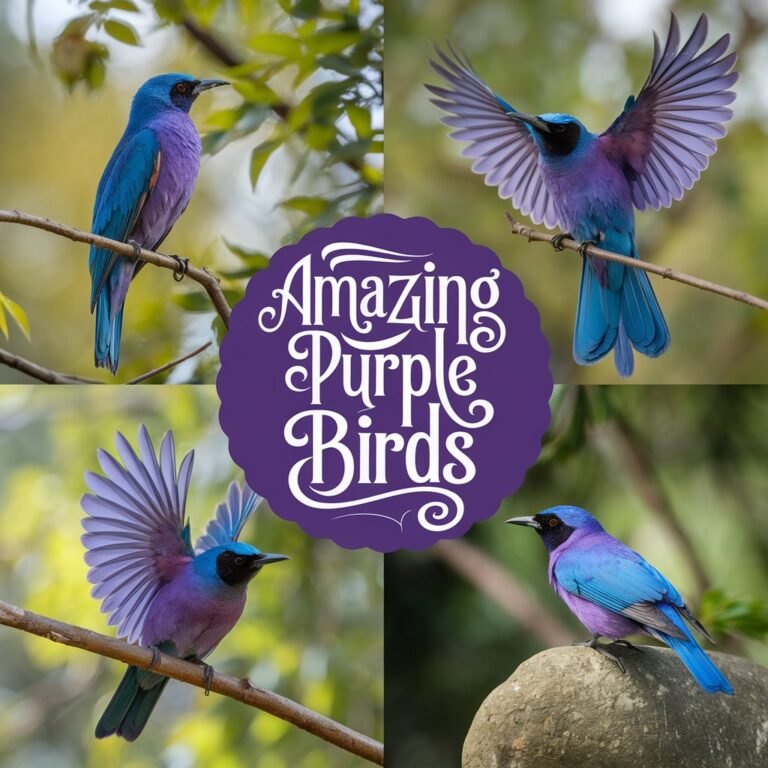The 9 Bird Species with the Longest Lifespans: Avian Longevity Champions
Among the many intriguing aspects of avian life, their lifespans stand out as particularly remarkable.
Birds have long fascinated humans with their ability to soar through the skies and their diverse array of species.
Some bird species can live for decades, far surpassing the average human lifespan.

Key Takeaways:
- Albatrosses reign supreme in longevity, with some individuals living up to 60 years in the wild.
- The Laysan Albatross named Wisdom holds the record for the oldest known wild bird at 74 years old as of 2024.
- Macaws and other large parrots can live for 50 years or more, with some reaching a century in captivity.
- Size matters: Larger bird species generally have longer lifespans than smaller ones.
- Habitat plays a role: Seabirds like albatrosses and frigatebirds tend to have exceptionally long lives.
- Intelligence contributes to longevity, as seen in species like the African Grey Parrot.
- Conservation efforts are crucial for preserving long-lived species like the Kākāpō.
- Captive birds often outlive their wild counterparts due to better healthcare and protection from predators.
- Banding studies have provided valuable data on bird lifespans in the wild.
- Adaptability to various environments can contribute to a species’ longevity.
The Majestic Albatross: Kings of Avian Longevity
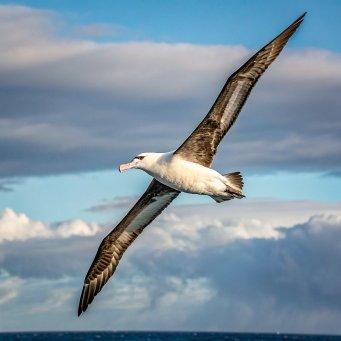
Albatrosses stand out as the undisputed champions of bird longevity. These magnificent seabirds, with their impressive wingspans reaching up to 11 feet, have adapted perfectly to life on the open ocean.
Albatrosses can live up to 60 years in the wild, a testament to their resilience and efficient lifestyle.
The most famous example of albatross longevity is Wisdom, a Laysan Albatross first banded in 1956. As of 2024, Wisdom is an astounding 74 years old, making her the oldest known wild bird in the world.
Throughout her long life, Wisdom has raised an estimated 30 to 36 chicks, demonstrating the remarkable reproductive capabilities of these long-lived birds.
Albatrosses owe their longevity to several factors, including their efficient flight mechanisms and ability to cover vast distances with minimal energy expenditure. Their diet of fish and squid, rich in omega-3 fatty acids, may also contribute to their long lifespans.
Macaws: Colorful Centenarians of the Rainforest
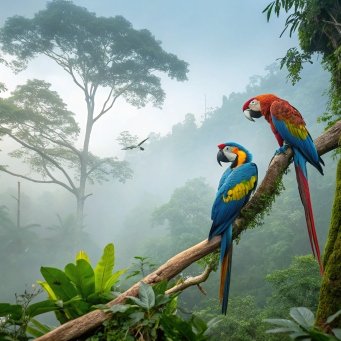
Macaws, with their vibrant plumage and intelligent personalities, are another group of birds known for their impressive lifespans.
These large parrots, native to the rainforests of Central and South America, can live up to 50 years in the wild. In captivity, some macaws have been known to surpass the century mark!
The blue-and-yellow macaw (Ara ararauna) is particularly notable for its longevity. These stunning birds, popularized by animated films like “Rio,” showcase their endurance in their natural habitats from Brazil to Panama.
Their long lives are attributed to their social nature, varied diet, and adaptability to different environments.
Macaws in captivity often outlive their wild counterparts due to regular veterinary care, protection from predators, and a consistent food supply. However, it’s important to note that the illegal pet trade poses a significant threat to wild macaw populations.
The Wise African Grey Parrot: Brains and Longevity Combined
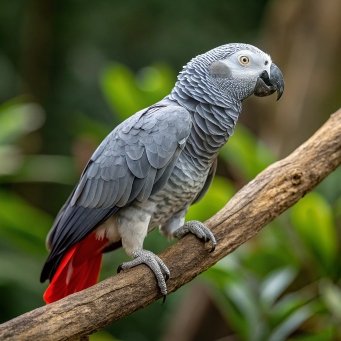
African Grey parrots are renowned for their exceptional intelligence, and this cognitive prowess may contribute to their impressive lifespans.
These birds can live up to 60 years in captivity, with some individuals reportedly reaching even greater ages.
Native to the dense forests of Western and Central Africa, African Grey parrots have grey feathers and distinctive red tails.
Their intelligence allows them to develop strategies for coping with various environmental pressures, which may explain their longevity.
Unfortunately, the African Grey parrot’s popularity as a pet has led to significant population declines in the wild. Conservation efforts are crucial to ensure these long-lived and intelligent birds continue to thrive in their natural habitats.
The Enigmatic Kākāpō: New Zealand’s Longevity Champion

The Kākāpō, also known as the owl parrot, is a unique and endangered species native to New Zealand.
These large, flightless parrots hold the record for the longest potential lifespan among birds, with individuals capable of living up to 90 years or more.
Kākāpōs are characterized by their green feathers and owl-like facial discs. They are critically endangered, with only a small population remaining on predator-free islands.
Their long lifespan is supported by conservation efforts and their adaptation to a specific ecological niche.
The Kākāpō’s longevity is particularly remarkable given its large size and flightless nature, which would typically make it more vulnerable to predators.
Their long lives may be a result of their slow reproductive rate and the absence of natural predators in their original habitat.
Andean Condor: Soaring Through Decades

The Andean Condor, one of the largest flying birds in the world, is another species known for its impressive lifespan. These majestic birds can live up to 50 years in the wild, with some individuals in captivity reaching even greater ages.
Andean Condors are characterized by their massive wingspan, which can reach up to 10 feet. They inhabit the mountainous regions of South America, particularly the Andes mountain range.
Their longevity may be attributed to their efficient soaring abilities, which allow them to cover vast distances with minimal energy expenditure.
These birds face threats from habitat loss and lead poisoning from ingesting spent ammunition. Conservation efforts are crucial to ensure the continued survival of these long-lived avian giants.
Cockatoos: Long-Lived Companions

Cockatoos, another group of large parrots, are known for their impressive lifespans, particularly in captivity.
These birds, which come in various species including the Umbrella Cockatoo and Sulfur-Crested Cockatoo, can live for 20 to 40 years in the wild.
In captivity, however, cockatoos have been known to live much longer. Some individuals have reportedly reached ages of 70 years or more. Their longevity is attributed to their intelligence, social nature, and adaptability to different environments.
Cockatoos are highly social birds, living in large flocks in the wild. This social behavior may contribute to their long lives by providing protection from predators and facilitating the sharing of information about food sources.
Swans: Graceful and Long-Lived

Swans, with their elegant appearance and serene demeanor, are another group of birds known for their relatively long lifespans.
In the wild, swans typically live for about 20 to 30 years. However, in protected environments with proper care, swans can live even longer.
The Trumpeter Swan, for example, has been recorded living up to 23 years and 10 months in the wild. In captivity, with protection from predators and access to regular veterinary care, swans can potentially live for 30 years or more.
Swans’ longevity may be attributed to their large size, which offers some protection from predators, and their adaptability to various aquatic habitats. Their diet, rich in aquatic plants and small invertebrates, may also contribute to their long lives.
Frigatebirds: Masters of the Air

Frigatebirds, known for their impressive aerial abilities, are also notable for their long lifespans. The Great Frigatebird, in particular, has been recorded living up to 38 years and 2 months in the wild.
These seabirds spend most of their lives in flight, rarely landing except to breed. Their long lifespans may be attributed to their efficient flying techniques, which allow them to cover vast distances with minimal energy expenditure.
Frigatebirds are also known for their ability to sleep while in flight, a skill that may contribute to their longevity by reducing stress and conserving energy.
Frigatebirds face threats from habitat loss and climate change, which can affect their breeding grounds and food sources. Conservation efforts are crucial to ensure these long-lived birds continue to grace our skies for generations to come.
Arctic Tern: Marathon Flyers with Impressive Lifespans

The Arctic Tern holds the record for the longest migration of any bird species, traveling from its Arctic breeding grounds to the Antarctic and back each year.
Despite this grueling annual journey of about 24,000 miles, Arctic Terns are known to live for impressively long periods.
Records show that Arctic Terns can live up to 34 years in the wild. This longevity is particularly remarkable considering the physical demands of their annual migration.
Their ability to navigate vast distances and adapt to both Arctic and Antarctic environments may contribute to their long lives.
Arctic Terns’ longevity highlights the incredible resilience of some bird species. However, they face threats from climate change, which can affect their breeding habitats and food sources.
Conservation efforts are crucial to protect these marathon flyers and their extraordinary lifespans.
Factors Contributing to Avian Longevity
Several factors contribute to the long lifespans observed in certain bird species. Size is one significant factor, with larger birds generally living longer than smaller ones.
This correlation is likely due to larger birds having fewer natural predators and being better able to withstand environmental stresses.
Habitat also plays a crucial role. Seabirds, such as albatrosses and frigatebirds, tend to have exceptionally long lives.
This may be due to the relative safety of their oceanic habitats and their efficient flying techniques, which allow them to cover vast distances with minimal energy expenditure.
Intelligence is another factor that can contribute to longevity. Species like the African Grey Parrot and various macaws are known for their cognitive abilities, which may help them avoid dangers and adapt to changing environments.
Adaptability to various environments can also contribute to a species’ longevity. Birds that can thrive in different habitats or adjust to environmental changes are more likely to survive for longer periods.
Conservation Implications of Long-Lived Bird Species
The long lifespans of certain bird species have important implications for conservation efforts. Species with long lifespans often have slower reproductive rates, meaning populations take longer to recover from declines.
This makes them particularly vulnerable to threats such as habitat loss, climate change, and human activities.
For example, the critically endangered Kākāpō, with its potential lifespan of up to 90 years, has a very slow reproductive rate.
This means that every individual is crucial for the species’ survival, and conservation efforts must focus on protecting both adult birds and their breeding habitats.
Similarly, long-lived seabirds like albatrosses and frigatebirds are vulnerable to threats such as plastic pollution in the oceans and changes in fish populations due to overfishing and climate change.
Conservation efforts for these species must address these wide-ranging threats to ensure their long-term survival.
The Role of Captivity in Bird Longevity
It’s worth noting that many bird species live significantly longer in captivity than in the wild. This is due to several factors, including protection from predators, regular veterinary care, and consistent food supply.
For example, a Sulphur-crested Cockatoo in a zoo reportedly lived for over 80 years, far exceeding the typical lifespan of wild cockatoos.
However, it’s important to remember that longevity in captivity doesn’t necessarily reflect natural lifespans. Wild birds face numerous challenges that captive birds don’t, including predators, diseases, and environmental pressures.
Therefore, while captive lifespans can provide insight into a species’ potential longevity, they should not be considered typical for wild populations.
FAQs
Which bird has the longest recorded lifespan?
The longest recorded lifespan for a wild bird belongs to Wisdom, a Laysan Albatross, who was at least 74 years old as of 2024.
Do larger birds generally live longer than smaller birds?
Yes, there is a general correlation between bird size and lifespan. Larger birds tend to live longer than smaller birds, although there are exceptions to this rule.
How do scientists determine the age of wild birds?
Scientists primarily use bird banding techniques to track the age of wild birds. When a bird is first captured, it is fitted with a unique band. Subsequent recaptures or reports of the banded bird allow scientists to calculate its minimum age.
Do birds in captivity live longer than wild birds?
In many cases, yes. Birds in captivity often live longer than their wild counterparts due to regular veterinary care, protection from predators, and consistent food supply.
What threats do long-lived bird species face?
Long-lived bird species often face threats from habitat loss, climate change, pollution, and in some cases, the illegal pet trade. Their slow reproductive rates make them particularly vulnerable to population declines.
How can we help protect long-lived bird species?
Supporting conservation efforts, reducing plastic waste, advocating for protected areas, and making environmentally friendly choices in our daily lives can all contribute to protecting long-lived bird species and their habitats.

Hello, I’m Emily Price, the founder of Birds Affection. As a passionate bird enthusiast and spiritual seeker, I’ve always been fascinated by the symbolic meanings and mystical connections between birds and our lives. On this website, I share my knowledge and insights on the spiritual significance of various bird species, exploring their roles as messengers, guides, and teachers. Through my writing, I aim to inspire and educate others on the profound wisdom and beauty that birds bring to our world. Join me on this journey as we delve into the enchanting realm of bird symbolism and discover the hidden meanings behind these magnificent creatures.

